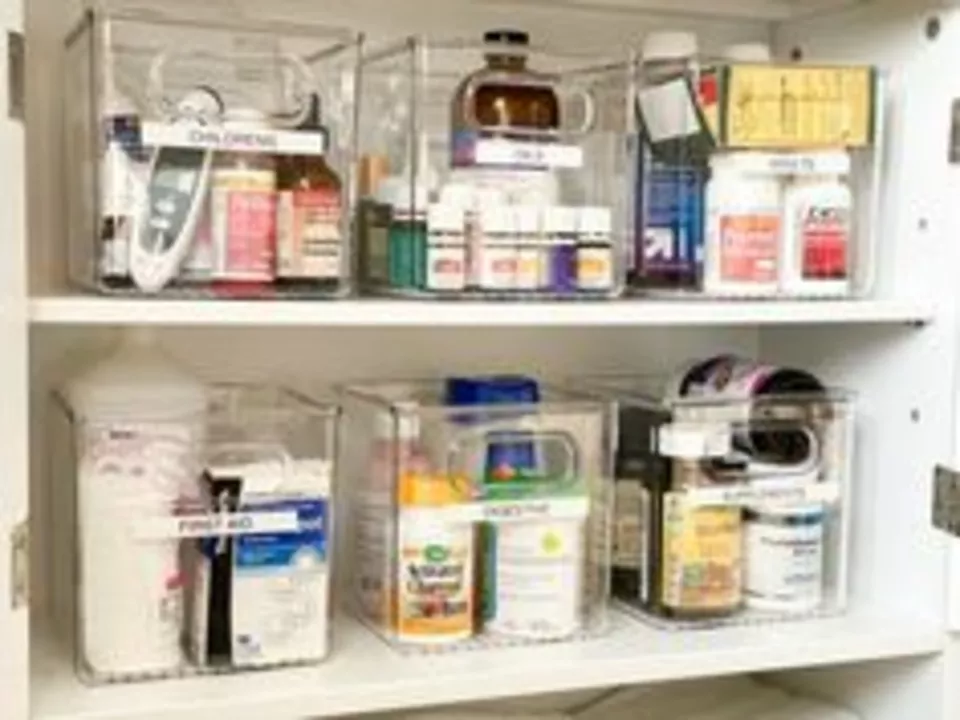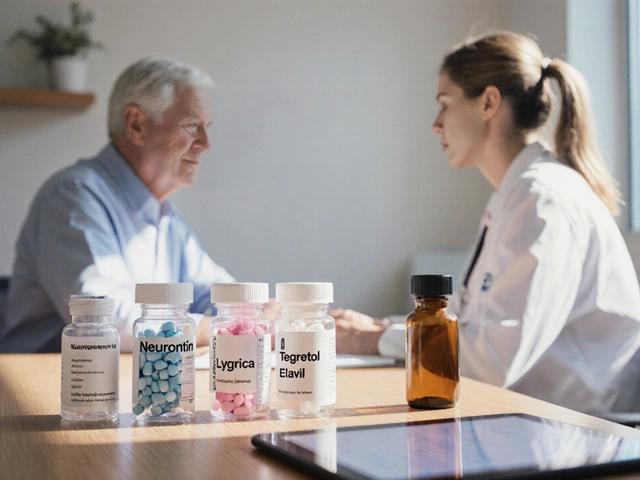How to Store Medicines and Supplements So They Stay Safe
Storing meds the right way keeps them effective and reduces risk. You don’t need fancy gear — just a few rules and a little habit change. Below are clear, practical tips you can use today for pills, liquids, creams, insulin, and supplements.
Everyday rules that help
Keep medicines in their original containers. Labels have dosage, lot number, and storage instructions. Don’t mix different pills in one bottle unless your pharmacist repackaged them safely.
Avoid heat and humidity. Bathrooms and van dashboards are bad spots — steam and sun break down drugs faster. Choose a cool, dry place like a bedroom closet or a dedicated cabinet away from windows and radiators.
Follow temperature instructions. Most pills do fine at room temperature (between 15–25°C / 59–77°F). If a label says “refrigerate,” keep it in the main fridge compartment, not the door, where temperature swings are bigger.
Use childproof storage if needed. Keep all meds out of reach of children and pets. A lockable box or a high shelf works well. Keep emergency numbers and poison control handy.
Check expiry dates before use. Expired meds can lose potency or change chemically. If a drug looks cloudy, smells odd, or changes color, don’t use it — dispose of it properly.
Special cases and travel tips
Insulin (like long-acting types) and some biologics need refrigeration. Unopened insulin should stay in the fridge. After first use, many insulins can be stored at room temperature for a limited time — often about 28 days for long-acting insulins. Always check the product leaflet or talk to your pharmacist for exact guidance.
Liquid antibiotics and eye drops often need fridge storage. Creams and topical meds can be sensitive to heat; store them as directed. If a prescription came with specific storage notes, follow them — manufacturers test stability under stated conditions.
Traveling? Keep medications in your carry-on bag. Use insulated pouches or small cool packs for items that must stay cool, but avoid freezing them. Bring a copy of prescriptions and storage instructions. If you cross time zones, stick to the same dosing schedule relative to local time or ask your healthcare provider how to adjust.
Pill organizers are handy but only transfer meds if you’ll use them within a short period and the organizer stays clean and dry. For multi-month supplies, keep the original packaging to preserve lot info and expiry dates.
Disposal: don’t flush meds unless the label tells you to. Many communities run drug take-back programs or have pharmacy drop-offs. If none are available, mix pills with coffee grounds or kitty litter in a sealed bag and toss in household trash, but remove personal info from medication labels first.
When you buy meds online or from a new pharmacy, check storage and shipping practices. Quality sellers keep temperature-sensitive drugs in temperature-controlled packaging. Ask questions if you’re unsure.
Small changes — storing meds out of the bathroom, keeping them in original containers, and following fridge rules — protect your treatment and your family. If you have a specific drug and want storage details, tell me which one and I’ll give the exact guidance.

How to Properly Store and Dispose of Biosoprolol
As a responsible individual, I've recently learned about the proper storage and disposal of Biosoprolol, a medication for heart conditions. To maintain its effectiveness, it should be stored at room temperature, away from heat, moisture, and direct sunlight. When disposing of expired or unwanted medication, it's crucial not to flush it down the toilet or drain. Instead, I found out that we should follow local guidelines or ask a pharmacist for safe disposal methods. By handling Biosoprolol correctly, we can ensure both our safety and the environment's protection.
Categories
- Medications (50)
- Health and Medicine (46)
- Health and Wellness (34)
- Online Pharmacy Guides (15)
- Nutrition and Supplements (7)
- Parenting and Family (3)
- Environment and Conservation (2)
- healthcare (2)
- prescription savings (1)



